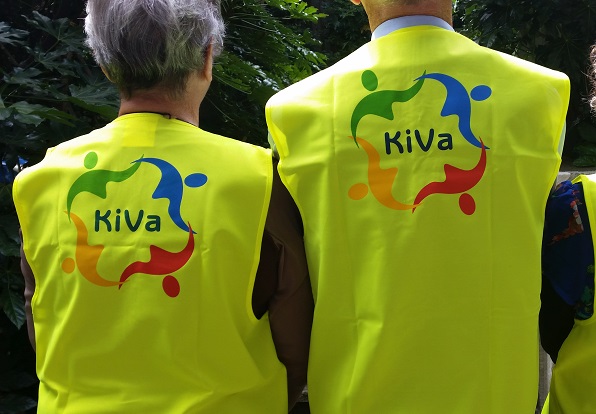
Bullying is an issue for all schools – and 94 per cent of teachers in New Zealand admit that they are unsure how to handle it. The facts are stark – rates of bullying in New Zealand are very high compared with other countries, and there is no evidence that things are getting any better.
High numbers of students self-report they are bullied on a regular basis and about a quarter do not feel safe enough to tell someone. Bullying in primary schools has not reduced at all during the past 20 years.
Sadly, the impacts of bullying are all too familiar; students who report frequent bullying have significantly lower achievement in mathematics and science, and studies reveal that many victims suffer psychological distress long into adulthood. The outcomes for bullies are poor, too. According to research published in medical journal The Lancet, they are much more likely than others to wind up with drug addictions or a criminal record.
So how can we turn around our appalling record on bullying? Experts say the solution entails buy-in from the whole school community – students, teachers and parents – to affect the change in the social attitudes that is required.
Deidre Vercauteren is education manager of KiVa, an anti-bullying programme that was developed in Finland and recently introduced to 12 New Zealand schools. She says the first attitude that needs to change is the belief that we don’t have a problem. “It has to be accepted and said that all schools have bullying incidents, and it needs to be acknowledged that schools that put resources into prevention are forward-thinking schools.”
Secondly, there is the attitude that bullying is ‘just part of growing up’. “Our kids have the right to live in a safe environment and should not have to experience bullying. Ever. And thirdly, that punishment or making the bully say they are sorry is ever going to make a difference. We need a cultural change, a change of attitudes, more empathy, and heightened awareness.”
The first step is to define what constitutes bullying. According to the Ministry of Education, the definition of bullying is based on four characteristics: it is deliberate, harmful, involves a power imbalance, and has an element of repetition.
And there are three key players – the bully, the victim and the bystander. “A bystander is someone who sees bullying happening and chooses to react by laughing, giggling, pointing, staring, doing nothing, whispering to other people about it and/or gossiping about it,” says Vicki Edwards-Brown from youth charity, Be The Change NZ. “They might play ‘the messenger’ between bully and victim, spread rumours they have heard or join in when a bully is ignoring/excluding someone. Or a bystander might ‘like’ a mean post on Facebook, Instagram or other social media sites.”
Programmes run by Be the Change NZ teach students how to move from bystander to “upstander” – a person who stands up for something, and take action in defence of others.
The bystander is also at the focus of KiVa’s programme. “KiVa is a whole-school strategy, and a key feature of the programme involves focusing on the role of the bystander,” says Ms Vercauteren.
“Studies show that the behaviour of bystanders is a significant factor in the prevalence of bullying, whereas a traditional zero-tolerance approach at a school level can often make things worse for the victim. KiVa offers bullies the chance to change their behaviour before things escalate.”
KiVa involves lessons, discussions, group work and online games to promote social skills, and, in cases where bullying is identified, has a set, solution-focused approach which can involve a bully’s peers, and all with a constant emphasis on positive behaviour.
An important aspect of the programme involves developing empathy in students, thereby providing a foundation for developing friendships, resolving conflicts and behaving responsibly.
Results from a study carried out in Finland involving 28,000 pupils and 234 schools showed a significant reduction in bullying after one year of implementing KiVa. This was demonstrated by a 98 per cent improvement in the victims’ situations and an end to bullying in 86 per cent of reported incidents.
Teachers can help by modelling respectful behaviour, and not allowing personal beliefs to affect a duty to their students, says Toni Duder, from LGBTIQ charity Rainbow Youth. “It’s okay for teachers to believe whatever they want believe, but they have a duty of care to their students to provide unbiased learning.
“It takes a norm-busting approach. Get students to look critically at everyday behaviour that may exclude or bully people. With (the expression) ‘that’s so gay’ – do a social experiment. Get people to start saying ‘that’s so straight’ – turn the tables. And put up posters and signs to give visibility to LGBTIQ identities.”
Of course, bullying is not confined to real life interactions. A global survey by Vodafone and YouGov of 5,000 teenagers across eleven countries reveals that around one in five teenagers has been cyberbullied and more than half say they fear cyberbullying more than face-to-face bullying. More than 40 per cent of teens think cyberbullying is a bigger problem than drug abuse, and 41 per cent commented that cyberbullying has made them feel depressed or helpless.
Cyber bullying can be carried out through social media, TXTs, websites or instant messaging, and can present itself in upsetting or threatening messages, rumours or embarrassing photos or videos posted online. And with 24/7 access to digital channels, the target can often feel there is no escape.
Students who are cyber-bullied are very likely to be bullied in other ways, too, says Ms Vercauten. “It is a proven fact that if a student is bullied over social media then they are likely to be bullied in other ways as well. The bully/bullies more than likely go to the same school. If the victim is unhappy, anxious, does not want to go to school, has diminishing achievement, it is most certainly something the school must address. However, this doesn’t mean it is the schools ‘fault’.”
The MOE organises advice into four sections – understanding bullying, what constitutes a safe school environment, policies and processes around bullying, and tools and processes for responding to bullying. It advocates prevention as the way forward.
In addition to the MOE, there are a number of resources available to schools to help tackle bullying:
- KiVa, an anti-bullying programme run by Accent Learning, Wellington.
- Pink Shirt Day – a one-day event organised by the Mental Health Foundation to promote bullying-free environments in schools, workplaces and communities. This initiative started in Canada in 2007 and has been running in New Zealand since 2009.
- The Peace Foundation – teaches schools how to set up peer mediation programmes, and ways to teach conflict management skills.
- Kia Kaha – a programme run by New Zealand Police which includes resources for students in years 0 to 13, teachers and principals, Boards of Trustees and parents.
- Rainbow Youth – a charity set up to conquer homophobia which delivers workshops to teachers and students.
- Be The Change NZ – a charity to empower young people to make positive changes in their school and communities. Delivers programmes, workshops and assembly talks.
“It can be hard to confront the fact that attitudes and beliefs that we are taught from birth to be natural are actually man-made, says Ms Duder. “It can be hard to realise that a system and a society that you benefit in may not work for others, and that if we put those most vulnerable at the centre of reform and change, everyone benefits.
“Teachers don’t need to have all the answers when it comes to bullying, they just need to take them seriously and guide the students involved towards people, places or resources that can help them.”









